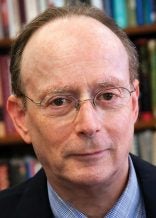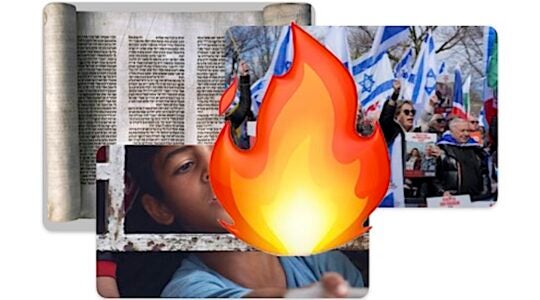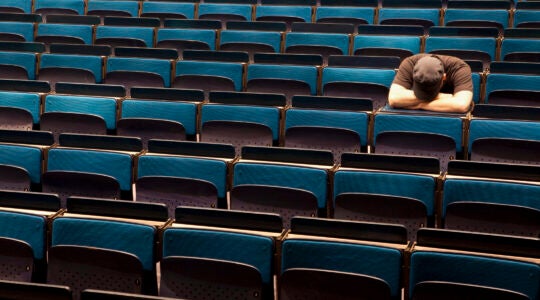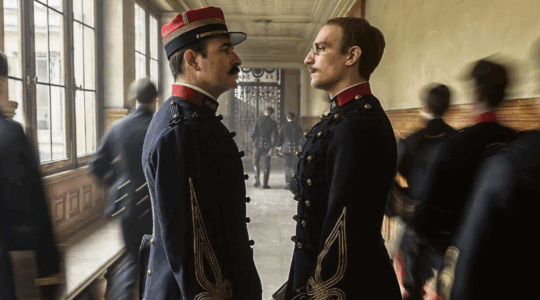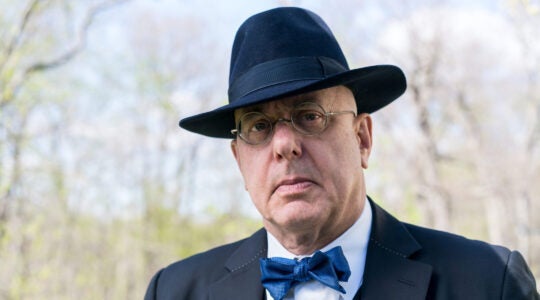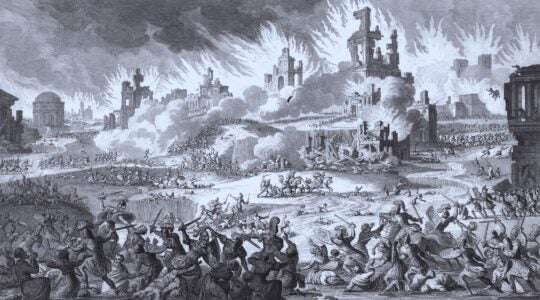Less than three months after the Orthodox Union issued a halachic prohibition against women serving in clerical roles, three leaders of the influential national body have begun meeting with the rabbis of the four OU-member synagogues in the U.S. that employ women clergy, The Jewish Week has learned.
Some believe the visits may be a first step toward punitive measures, and possible expulsion, for congregations that do not conform with the OU’s decision.
“It’s a threat, no question,” said Rabbi Shmuel Herzfeld of Ohev Sholom, also known as The National Synagogue, in Washington, D.C., which employs Maharat Ruth Friedman. (Maharat is a Hebrew acronym that translates as female leader of Jewish law, spirituality and Torah.)
But according to OU sources, the goal of the visits of OU’s executive vice president, Allen Fagin, its president, Mark Bane, and past president Martin Nachimson, is to look into the policies and practices related to women of the four congregations in question, and to report back to the OU board.
The OU, which serves some several hundred Modern Orthodox congregations around the country, hopes to find a path to ensure that the congregations remain member synagogues without violating its prohibition.
The four congregations — the Hebrew Institute of Riverdale, Beth Sholom in Potomac, Md., Bnai David-Judea in Los Angeles and Ohev Sholom in Washington, D.C. — have women with various titles to indicate they serve rabbinic functions.
In February, the OU released a 17-page report by a nine-rabbi panel that praised advanced Torah study and teaching for women but stated that women cannot have the title of rabbi or the status of a clergy member.
The rabbinic statement, endorsed in an accompanying OU report, said that women in the clergy was contrary to the “halachic ethos,” and not in keeping with traditional Jewish gender roles.
Those close to the discussions, which are private and at an early stage, say some OU leaders want to “nip the problem in the bud” by removing the four synagogues from membership now rather than waiting until there are more congregations employing women in clerical positions. The belief is that a decisive action will dissuade other congregations from contemplating such a move.
Others within the OU camp believe its leaders hope compromises can be reached — such as changing the titles, roles or practices of the women clergy — that would allow the synagogues to retain their OU status. While the primary role of the women in question is Torah education and pastoral counseling, which is not only permissible but exemplary according to the OU report, the chief sticking point appears to be the women’s titles.
Any designation suggesting a rabbinic role, such as maharat, rabba (or assistant rabba) or rabbanit, is problematic, according to the OU, not so much for the title itself but for the context of how it is publicized and what it connotes in terms of duties and responsibilities. The real problem for the OU is if a woman is seen to be on a rabbinic track rather than an educational or pastoral role model.
The formation of the rabbinic panel, which was charged with determining whether it is acceptable under halacha (Jewish law) to “employ a woman in a rabbinic function,” was prompted by what the OU’s Fagin described to The Jewish Week in February as “an acceleration of shuls that hired or contemplated hiring female clergy in the last several years.”
Rabbi Herzfeld noted that in a survey taken by his D.C. synagogue among its membership of 400 families, 82 percent agreed that female spiritual leadership enhances members’ spiritual connection with Judaism; less than 4 percent disagreed.
Further, 90 percent felt the Orthodox community should have female spiritual leadership, and less than 2 percent disagreed.
Perhaps most significant, more than 68 percent of the respondents — about 37 percent of the membership — said that “the OU statement about female clergy makes me less likely to affiliate with Orthodox groups in other contexts.” Sixteen percent disagreed with that statement. And almost three-quarters of the members polled said the OU statement about female clergy “diminished” their view of Orthodox Judaism.
“That’s what makes me most sad,” said Rabbi Herzfeld, who is scheduled to meet, along with Maharat Friedman, with the three OU leaders later this month. “The survey demonstrates that this very aggressive position of the OU is causing people to be less likely to affiliate Orthodox.
“Many of our congregants,” he said, “and especially the younger ones, may conclude: ‘If this is Orthodoxy, I don’t want any part of it.’”
Traditionalists might well counter that if a synagogue permits women clergy, it’s not really Orthodoxy.
Jonathan Sarna, professor of American Jewish history at Brandeis University, put the issue in historical context, noting that “women’s issues have become defining ones for a Jewish religious movement. This has a long history — first, Orthodox debated the size and placement of the mechitza, then the question of mixed seating itself became a hotly debated issue, and now women clergy.”
The problem with making women clergy the dividing line between Orthodoxy and the other denominations, according to Sarna (whose daughter, Leah, is a student at Yeshivat Maharat), is three-fold: Orthodoxy has trained a significant number of well-educated women, some of whom are less willing to automatically accept interpretations of male rabbinic leaders on a given issue; the Orthodox movement has “greatly benefited from being inclusive” so that “some in the OU understand they are playing with fire when they start talking about expelling congregations over this issue”; and “women Orthodox clergy are becoming more and more prevalent in Israel,” where “the title of choice” has become rabbanit.
Sarna observed that as women clergy become increasingly accepted in Israel, “one suspects that the opposition in America will decline. But in the short term, some at the OU believe they can still stamp out the trend toward women clergy.”
It’s not hard to imagine a divide within Modern Orthodoxy on the issue of women’s ritual roles, but as Sarna points out: “The question that Orthodox leaders have to ask themselves is whether such a division would ultimately strengthen Orthodoxy in America or weaken it.”
For now, the OU leaders are set to hold meetings in the next week with the rabbinic team at Hebrew Institute of Riverdale, which is led by Rabbi Steven Exler and includes three women (full disclosure: I am a member there), and with Rabbi Nissan Antine of Beth Sholom in Potomac, Md., where Maharat Hadas Fruchter is assistant spiritual leader.
Rabba Sara Hurwitz, dean of Yeshivat Maharat, where each of the women at the four congregations received ordination, said she was pleased to learn the OU is “finally meeting a few of our graduates,” and noted that five more women will be ordained there next month. Ariel Groveman Weiner, chair of the board of the women’s yeshiva, said she was certain the OU leaders will hear “what Yeshivat Maharat knows to be true — that Orthodox female clergy are deeply embedded and respected, and have raised the level of Jewish commitment, engagement and connection in the communities they serve.”
The OU leaders met in Los Angeles in recent days with Rabbi Yosef Kanefsky of Bnai David-Judea, where Rabbanit Alissa Thomas-Newborn serves.
The rabbis in question appear to want to remain within the OU, among whose many programs include the National Conference of Synagogue Youth (NCSY), popular with teens, and Yachad, which offers a range of inclusion activities for children and adults with disabilities.
But the rabbis also believe that having women clergy enhances Orthodox Jewish life.
In an Opinion piece in The Jewish Week in February, in response to the OU rabbinic statement, Rabbi Kanefsky described it as “a leadership error of historic proportions.” He wrote: “I do not know what action the OU will take against us. But I do know that we will be strong, and that we will be resolute, because that’s what you do when you are right … [and] your driving value is the service of God and of the Jewish people.”
Gary@jewishweek.org
The New York Jewish Week brings you the stories behind the headlines, keeping you connected to Jewish life in New York. Help sustain the reporting you trust by donating today.
